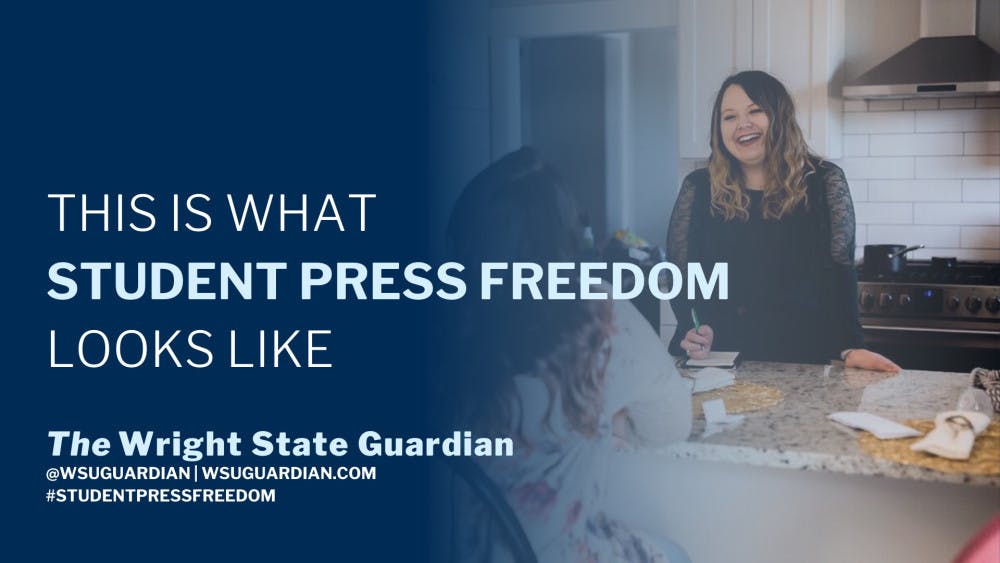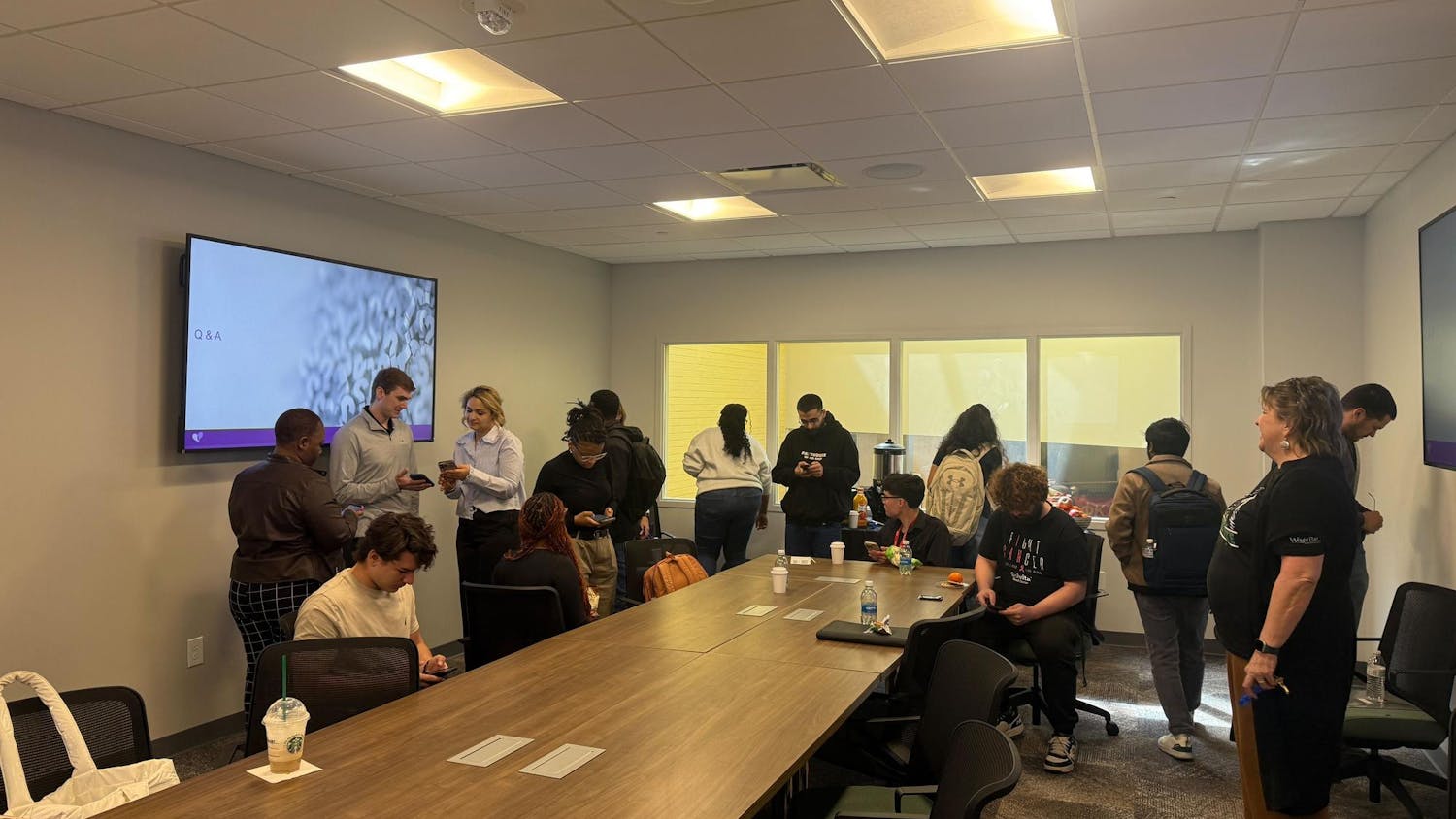“You are a student who writes for a school paper and you think you’re important?”
I will never forget the day those words were said to me. I spent weeks and months thinking about it. I questioned my role on the newspaper and if my work mattered.
And then something incredible happened; I watched the impact of student journalism in action. I watched the ripple effects of students taking action, faculty, and staff voicing their thoughts. And I now wear a press pass with a different type of pride and respect for what it symbolizes.
A journalist is often defined as a person who writes for a newspaper or magazine, a watchdog or a truthseeker.
Then why is it any different when you put ‘student’ in front of the word journalist? My pass says ‘press’ just like everyone else’s in the field.
On Student Press Freedom Day, hosted by the Student Press Law Center (SPLC), we celebrate and acknowledge the work not just our team at the Wright State Guardian does, but that of student news publications across the United States.

Especially at a time of great change and even greater controversy toward media roles.
But why does this matter? It matters because many publications still suffer from censorship, prior review and threats to funding. The SPLC is a nonprofit organization that works to promote, support and defend the First Amendment and press freedom rights of high school and college journalists and their advisers.
This year, the SPLC has chosen a theme of ‘what does student press freedom look like?’
This is what Student Press Freedom looks like - From your Wright State Guardian team
Our team of journalists in our newsroom come to the table every Friday with story pitches. We sit in a circle with our laptops open and begin going down the list.
Section by section, reporter by reporter, they are assigned.
The stories they bring to the table? They are the student organization hosting a conference. They are the board of trustee meetings to hold our administration accountable for decisions with your tuition. They are the stories about crime on campus, the scores for the basketball games and coach of the year.
Student Press Freedom looks like students who go to class every day, who work on campus and who are involved but have questions that dig deeper.
Student Press Freedom is exercised through our ability to write the very words you’re reading now and know they were not under prior review by an administrator.
Student Press Freedom also looks like frustrating late nights of trying to meet a deadline when the public records request is taking months to fulfill or your source has not responded back to your questions.
Student Press Freedom is so vital to the checks and balances system of an institution but it comes with setbacks as we learn to navigate a system that contains many roadblocks.
Student Press Freedom is one of the largest megaphones on a campus.
As student journalists without a journalism program, we spend much of our time navigating the system. We are fortunate to have faculty, alumni, and staff in our corner when we have questions. We do not take our roles lightly and we understand the significance of the work we do.
Student journalists are a voice. They are the watchdog for a university campus. They bring to light the best and brightest parts of a campus community but highlight the darkest as well in order to demand change from those in positions of power.
In the last year, student news publications have broken national news and raised questions for local and state governments. But most importantly, they informed others.
Our jobs are not to be a branch of the public relations department; our jobs are not to always make everyone happy. They are to inform our campus community. We celebrate the opportunity to do so.
But in the last few years, these freedoms have come under fire and even scrutiny across the country from middle school publications to high school and at the college/university level.
The student press is not quite safe though. We at the Wright State Guardian know that and are excited to announce we will be working with SPLC in the New Voices initiative.

New Voices, a new initiative
Currently, there are 14 states in the United States with laws in place to protect First Amendment rights of student journalists.
Ohio is not one.
New Voices is a nonpartisan student-driven initiative with the goal to restore and protect student press freedom and stop retaliation against advisers.
According to the SPLC website, “New Voices laws ensure that student media can only be censored if that media is libelous or slanderous, contains an unwarranted invasion of privacy, violates state or federal law, or incites students to disrupt the orderly operation of a school. New Voices laws also prohibit retaliation against advisers who refuse to censor student journalists.”
Why does this matter? In 1988, the Supreme Court set a precedent with the Hazelwood School District v. Kuhlmeier where a student publication was censored for certain types of articles. At the Supreme Court level, it was ruled in favor of the school district.
Since this landmark case, the subjective language used in that ruling has allowed for censorship and retaliation toward publications and their adviser by school administrators.
“If a student believes their speech was or is about to be illegally censored, they can file a lawsuit, called an injunction, to stop the censorship. An adviser who feels they have been fired or otherwise retaliated against for refusing to censor student media that does not meet the criteria for censorship under the law can do the same,” according to SPLC. “Some New Voices laws also require school districts to adopt school-sponsored media policies that provide guidance and uniformity to help administrators in their efforts to support both student press freedom and the wider school community.”
I wear a press pass because I care about seeking the truth and asking tough questions. It’s because I want others to understand that the role I serve is to inform and educate them about their community.












